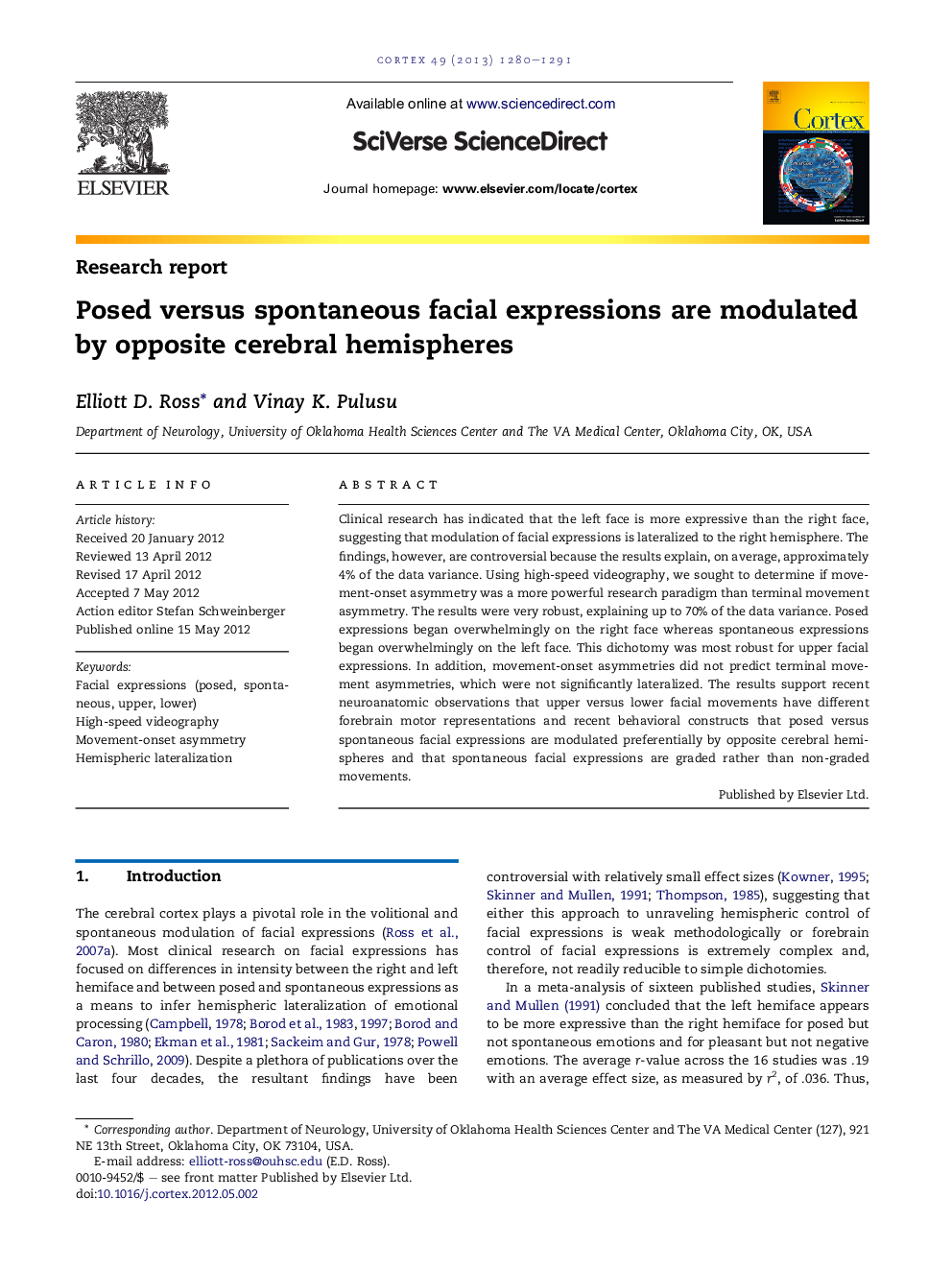| Article ID | Journal | Published Year | Pages | File Type |
|---|---|---|---|---|
| 10463268 | Cortex | 2013 | 12 Pages |
Abstract
Clinical research has indicated that the left face is more expressive than the right face, suggesting that modulation of facial expressions is lateralized to the right hemisphere. The findings, however, are controversial because the results explain, on average, approximately 4% of the data variance. Using high-speed videography, we sought to determine if movement-onset asymmetry was a more powerful research paradigm than terminal movement asymmetry. The results were very robust, explaining up to 70% of the data variance. Posed expressions began overwhelmingly on the right face whereas spontaneous expressions began overwhelmingly on the left face. This dichotomy was most robust for upper facial expressions. In addition, movement-onset asymmetries did not predict terminal movement asymmetries, which were not significantly lateralized. The results support recent neuroanatomic observations that upper versus lower facial movements have different forebrain motor representations and recent behavioral constructs that posed versus spontaneous facial expressions are modulated preferentially by opposite cerebral hemispheres and that spontaneous facial expressions are graded rather than non-graded movements.
Related Topics
Life Sciences
Neuroscience
Behavioral Neuroscience
Authors
Elliott D. Ross, Vinay K. Pulusu,
